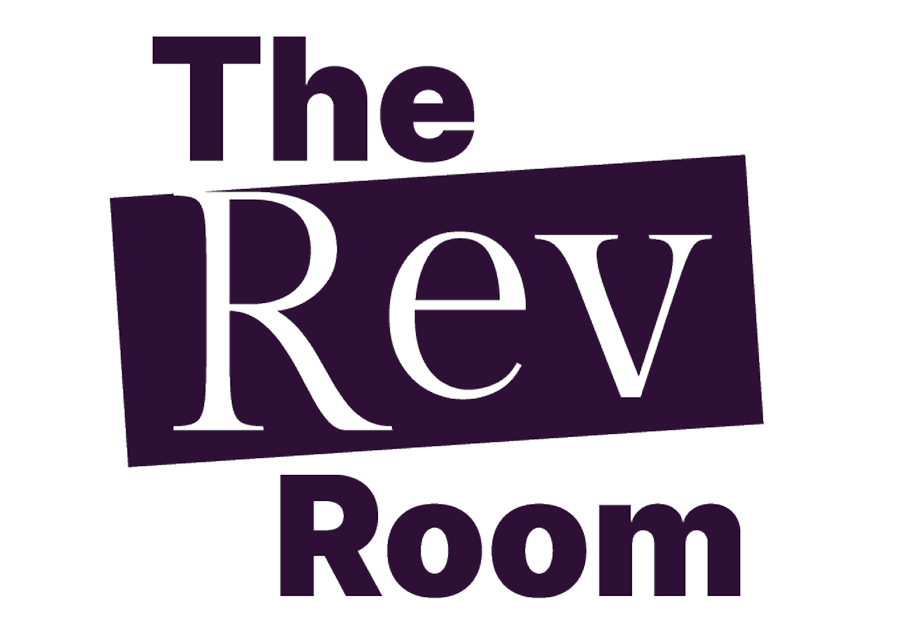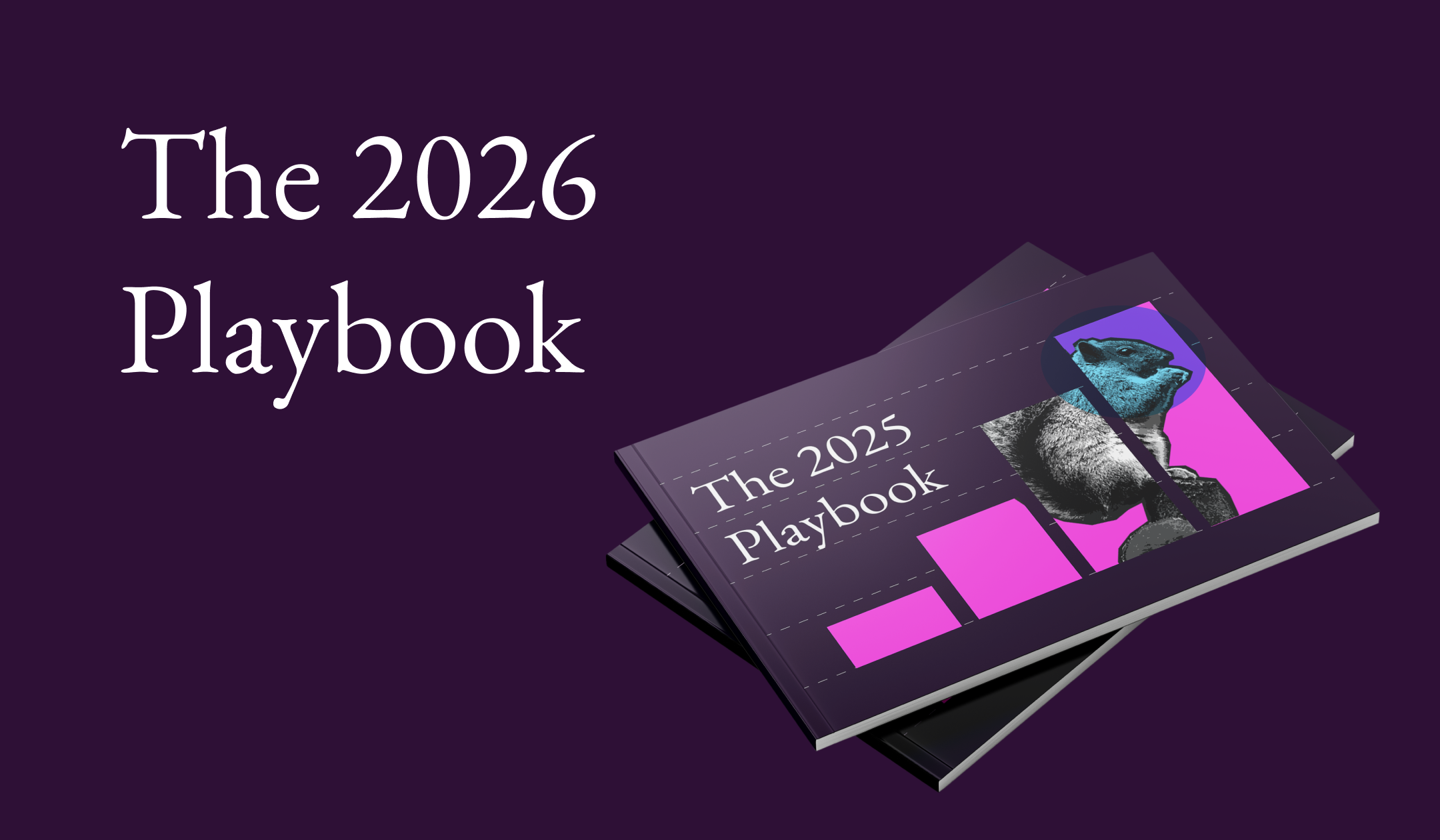Unlock 2024 Success: Master the Total Relevant Market
.svg)

In partnership with:
Featuring
Featuring
How are you going to stand out in 2026?
Buyers are in control of the buying process. Over 70% of it is happening online. And they are putting companies on their short list of vendors that provide value and establish trust with their content.
How are you accounting for this in your 2026 strategy?
You need to stand out. To make sure your buyers notice you. Let us help you build that into your strategy for next year -->
%20(1).webp)
The Revenue Marketer

Unlock 2024 Success: Master the Total Relevant Market
Still chasing 10% efficiency gains?
2023-2025 were the years of experimentation with AI. 2026 is the year to make it transformative. If you're still trying to figure out the strategic advantage AI will bring to your team, we're here to help!
Setting the right foundations is key to achieving your revenue goals. One vital foundation is defining your Total Relevant Market (TRM). While we often talk about the Total Addressable Market (TAM), it's essential to differentiate the prospects that align with your organization and drive sustainable growth from those that do not.
The Power of the Total Relevant Market
Most organizations have significant challenges in identifying the right prospects to target, ensuring that every effort is focused on the right accounts. The concept of TRM is crucial in this context, as it allows businesses to narrow down their target to the most relevant prospects, ensuring efficient resource allocation and higher chances of conversion.
To hear more from GTM Partners about the Total Relevant Market and how to make it work for your organization, watch our webinar.
The Role of Data in TRM
Data plays a crucial role in defining and operationalizing your TRM. Different types of data include:
- Business and Market Intelligence - Understanding the industry and market conditions of potential customers.
- Account Contact Data - Information about key contacts within target accounts.
- Intent Data - Signals that indicate a prospect's readiness to buy.
- Engagement Data - Tracking how prospects interact with your brand and content.
- Account Scoring - Using data to rank and prioritize accounts.
- Customer Health Scores - Helps to identify the characteristics of bad-fit accounts.
Many of these sources of data can be found in technologies you already own, like PathFactory, Drift, Demandbase, Gainsight, and more.
Defining Your Ideal Customer Profile (ICP)
The first step in operationalizing your TRM is to develop an Ideal Customer Profile (ICP). This involves gathering and validating beliefs from various teams within your organization—sales, customer success, product, and marketing. Each team may have different perspectives and biases, so it's essential to collect and analyze all this information to create a comprehensive ICP.
A good ICP should consider current customer data, potential shifts in target audiences (e.g., moving upmarket), and the technological solutions available to scale the identification process. Once the ICP is established, you can score potential accounts based on various criteria, including firmographics, technographics, and buying readiness.
Operationalizing Your ICP
Operationalizing your ICP involves several steps:
1. Defining Characteristics - Identify the top characteristics that define your ideal customers. Aim for a top seven or ten traits that include a mix of firmographics, technographics, and other characteristics that make for good customers.
2. Collecting Data - Use various data sources to gather information about potential customers. This includes firmographic data, technographic data, intent data, and engagement data.
3. Scoring and Scaling - Develop a scoring system to rank potential customers based on how well they fit your ICP. This helps prioritize resources toward the most promising leads.
4. Operationalize in your Technology - Make sure your ICP lives within your various technologies to ensure it is constantly evaluating new accounts and can be a shorthand for executing against your ICP.
Measuring ROI
Measuring ROI for your TRM involves different approaches depending on your solution:
- Attributable ROI - Directly connecting investments to revenue generated.
- Transformational ROI - Demonstrating broader business impacts that are harder to quantify directly.
- Efficiency ROI - Cost savings achieved through improved processes.
- Necessity ROI - The essential cost of doing business, meeting buyer expectations.
- Indirect ROI - Contributions to broader business outcomes that are part of a larger strategy.
Each type of ROI appeals to different stakeholders within the buying committee, from CFOs to department heads and individual users. Understanding and communicating the right type of ROI is crucial for effective decision-making.
Defining and operationalizing your Total Relevant Market is a strategic imperative for 2024 and beyond. By focusing on the most relevant prospects and leveraging the right data and technology solutions, you can drive sustainable growth and achieve your revenue goals. Remember, the success of your TRM strategy lies in its continuous refinement and alignment with your overall go-to-market approach.
To hear more from GTM Partners about the Total Relevant Market and how to make it work for your organization, watch our webinar or let’s talk.
About the author
Service page feature

Account-based marketing
Setting the right foundations is key to achieving your revenue goals. One vital foundation is defining your Total Relevant Market (TRM). While we often talk about the Total Addressable Market (TAM), it's essential to differentiate the prospects that align with your organization and drive sustainable growth from those that do not.
The Power of the Total Relevant Market
Most organizations have significant challenges in identifying the right prospects to target, ensuring that every effort is focused on the right accounts. The concept of TRM is crucial in this context, as it allows businesses to narrow down their target to the most relevant prospects, ensuring efficient resource allocation and higher chances of conversion.
To hear more from GTM Partners about the Total Relevant Market and how to make it work for your organization, watch our webinar.
The Role of Data in TRM
Data plays a crucial role in defining and operationalizing your TRM. Different types of data include:
- Business and Market Intelligence - Understanding the industry and market conditions of potential customers.
- Account Contact Data - Information about key contacts within target accounts.
- Intent Data - Signals that indicate a prospect's readiness to buy.
- Engagement Data - Tracking how prospects interact with your brand and content.
- Account Scoring - Using data to rank and prioritize accounts.
- Customer Health Scores - Helps to identify the characteristics of bad-fit accounts.
Many of these sources of data can be found in technologies you already own, like PathFactory, Drift, Demandbase, Gainsight, and more.
Defining Your Ideal Customer Profile (ICP)
The first step in operationalizing your TRM is to develop an Ideal Customer Profile (ICP). This involves gathering and validating beliefs from various teams within your organization—sales, customer success, product, and marketing. Each team may have different perspectives and biases, so it's essential to collect and analyze all this information to create a comprehensive ICP.
A good ICP should consider current customer data, potential shifts in target audiences (e.g., moving upmarket), and the technological solutions available to scale the identification process. Once the ICP is established, you can score potential accounts based on various criteria, including firmographics, technographics, and buying readiness.
Operationalizing Your ICP
Operationalizing your ICP involves several steps:
1. Defining Characteristics - Identify the top characteristics that define your ideal customers. Aim for a top seven or ten traits that include a mix of firmographics, technographics, and other characteristics that make for good customers.
2. Collecting Data - Use various data sources to gather information about potential customers. This includes firmographic data, technographic data, intent data, and engagement data.
3. Scoring and Scaling - Develop a scoring system to rank potential customers based on how well they fit your ICP. This helps prioritize resources toward the most promising leads.
4. Operationalize in your Technology - Make sure your ICP lives within your various technologies to ensure it is constantly evaluating new accounts and can be a shorthand for executing against your ICP.
Measuring ROI
Measuring ROI for your TRM involves different approaches depending on your solution:
- Attributable ROI - Directly connecting investments to revenue generated.
- Transformational ROI - Demonstrating broader business impacts that are harder to quantify directly.
- Efficiency ROI - Cost savings achieved through improved processes.
- Necessity ROI - The essential cost of doing business, meeting buyer expectations.
- Indirect ROI - Contributions to broader business outcomes that are part of a larger strategy.
Each type of ROI appeals to different stakeholders within the buying committee, from CFOs to department heads and individual users. Understanding and communicating the right type of ROI is crucial for effective decision-making.
Defining and operationalizing your Total Relevant Market is a strategic imperative for 2024 and beyond. By focusing on the most relevant prospects and leveraging the right data and technology solutions, you can drive sustainable growth and achieve your revenue goals. Remember, the success of your TRM strategy lies in its continuous refinement and alignment with your overall go-to-market approach.
To hear more from GTM Partners about the Total Relevant Market and how to make it work for your organization, watch our webinar or let’s talk.
Resources
About the author
Service page feature

Account-based marketing
Unlock 2024 Success: Master the Total Relevant Market

Speakers
Setting the right foundations is key to achieving your revenue goals. One vital foundation is defining your Total Relevant Market (TRM). While we often talk about the Total Addressable Market (TAM), it's essential to differentiate the prospects that align with your organization and drive sustainable growth from those that do not.
The Power of the Total Relevant Market
Most organizations have significant challenges in identifying the right prospects to target, ensuring that every effort is focused on the right accounts. The concept of TRM is crucial in this context, as it allows businesses to narrow down their target to the most relevant prospects, ensuring efficient resource allocation and higher chances of conversion.
To hear more from GTM Partners about the Total Relevant Market and how to make it work for your organization, watch our webinar.
The Role of Data in TRM
Data plays a crucial role in defining and operationalizing your TRM. Different types of data include:
- Business and Market Intelligence - Understanding the industry and market conditions of potential customers.
- Account Contact Data - Information about key contacts within target accounts.
- Intent Data - Signals that indicate a prospect's readiness to buy.
- Engagement Data - Tracking how prospects interact with your brand and content.
- Account Scoring - Using data to rank and prioritize accounts.
- Customer Health Scores - Helps to identify the characteristics of bad-fit accounts.
Many of these sources of data can be found in technologies you already own, like PathFactory, Drift, Demandbase, Gainsight, and more.
Defining Your Ideal Customer Profile (ICP)
The first step in operationalizing your TRM is to develop an Ideal Customer Profile (ICP). This involves gathering and validating beliefs from various teams within your organization—sales, customer success, product, and marketing. Each team may have different perspectives and biases, so it's essential to collect and analyze all this information to create a comprehensive ICP.
A good ICP should consider current customer data, potential shifts in target audiences (e.g., moving upmarket), and the technological solutions available to scale the identification process. Once the ICP is established, you can score potential accounts based on various criteria, including firmographics, technographics, and buying readiness.
Operationalizing Your ICP
Operationalizing your ICP involves several steps:
1. Defining Characteristics - Identify the top characteristics that define your ideal customers. Aim for a top seven or ten traits that include a mix of firmographics, technographics, and other characteristics that make for good customers.
2. Collecting Data - Use various data sources to gather information about potential customers. This includes firmographic data, technographic data, intent data, and engagement data.
3. Scoring and Scaling - Develop a scoring system to rank potential customers based on how well they fit your ICP. This helps prioritize resources toward the most promising leads.
4. Operationalize in your Technology - Make sure your ICP lives within your various technologies to ensure it is constantly evaluating new accounts and can be a shorthand for executing against your ICP.
Measuring ROI
Measuring ROI for your TRM involves different approaches depending on your solution:
- Attributable ROI - Directly connecting investments to revenue generated.
- Transformational ROI - Demonstrating broader business impacts that are harder to quantify directly.
- Efficiency ROI - Cost savings achieved through improved processes.
- Necessity ROI - The essential cost of doing business, meeting buyer expectations.
- Indirect ROI - Contributions to broader business outcomes that are part of a larger strategy.
Each type of ROI appeals to different stakeholders within the buying committee, from CFOs to department heads and individual users. Understanding and communicating the right type of ROI is crucial for effective decision-making.
Defining and operationalizing your Total Relevant Market is a strategic imperative for 2024 and beyond. By focusing on the most relevant prospects and leveraging the right data and technology solutions, you can drive sustainable growth and achieve your revenue goals. Remember, the success of your TRM strategy lies in its continuous refinement and alignment with your overall go-to-market approach.
To hear more from GTM Partners about the Total Relevant Market and how to make it work for your organization, watch our webinar or let’s talk.
About the author
Service page feature








